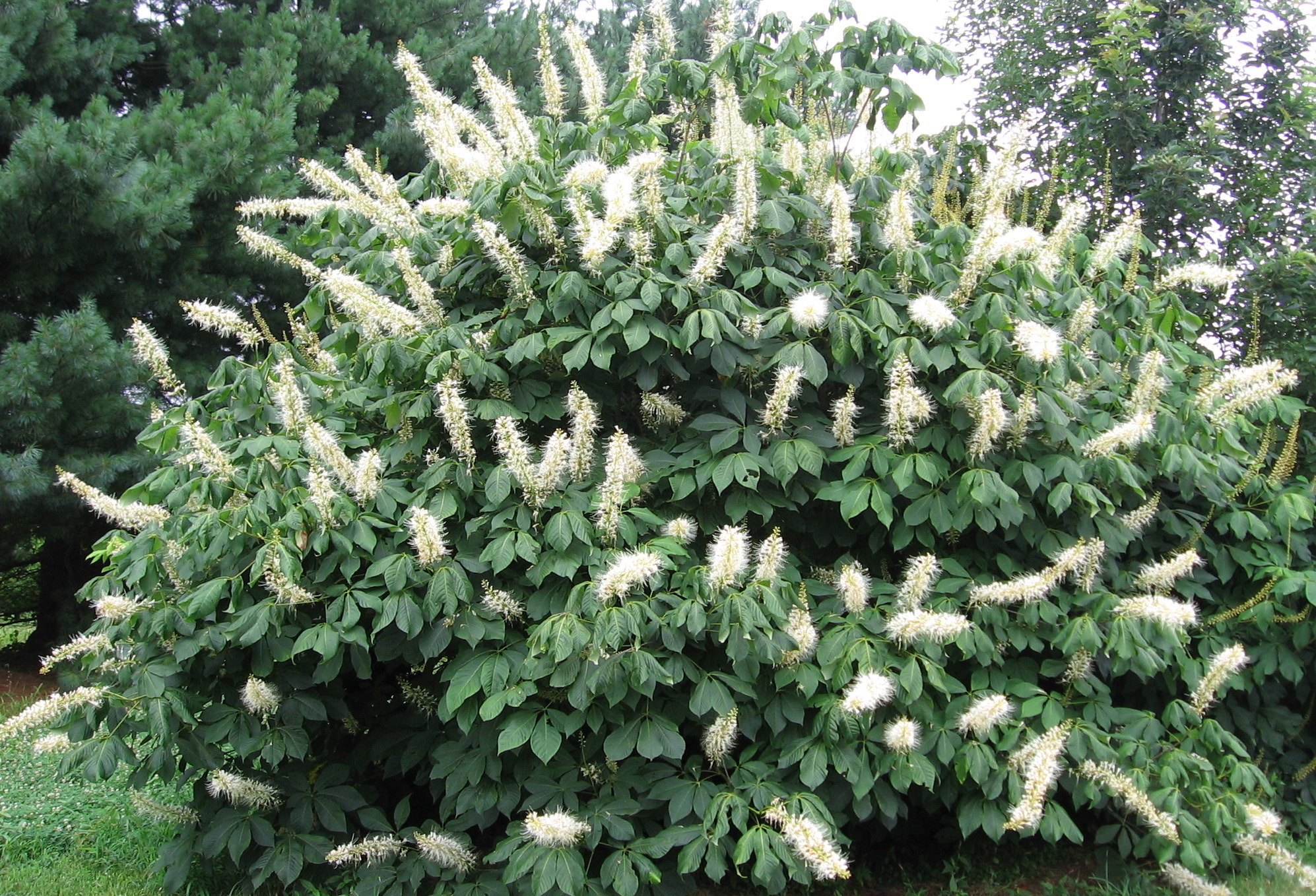Aesculus parviflora
Shrub buckeye (Aesculus parviflora )
The shrub buckeye (Aesculus parviflora ), also called Bottlebrush Buckeye, is a plant which belongs to the genus of the horse chestnut (Aesculus ). It is native to North America.
Description
The shrub buckeye is a wide -growing, deciduous shrub. The plant height of a solitary plant is up to 4 m. The growth habit is in older specimens significantly in width, which by underground runners ( stolons ) Inventory diameter of 10 m and more can be achieved. She is a Flachwurzler with numerous fine roots. The bark is light gray to gray-brown or gray-green. The bark of the branches go more in a light or yellowish gray. You twigs are round in cross section. The decussate, composite leaves are fingered with five to seven part sheets. The leaflets have a blunt tip with wedge-shaped base and a kerbig sawn edge. The upper side of the leaf is dull green, light green, the underside. The autumn color is yellow.
From the end of June until about July it flowers in paniculate inflorescence of about 10 mm in length. The white, fragrant flowers are hermaphrodite. The stamens are pink with red anthers.
In the fall of ripe smooth, relatively thin, yellow - brown, stingless capsule fruits; its diameter is about 20 to 30 mm. The fruits are round and much brighter than in the ordinary horse chestnut.
Occurrence
The original home of the shrub buckeye are the three states of Alabama, Georgia and South Carolina in the southeastern United States. In the U.S. you can find them now in Pennsylvania, New Jersey and Washington, DC.
Also, in some European gardens and parks, this species was now established as an ornamental plant, such as the Princely Pueckler Park Bad Muskau and in the landscape park of the manor Wietzow. The shrub buckeye preferably protected as a late frost endangered plant, sunny to semi- shady positions.
Ingredients
The shrub buckeye contains - as well as the Horse Chestnut - as a poison aescin, a mixture of about 30 different saponins, and esculin.
Various amino acids with cyclopropane structure have been isolated from the plant. In the fruit is glycine, among other α - ( Carboxycyclopropyl ). Esters of indole - 3-acetic acid are in the plant.
Pests and diseases
The shrub buckeye is against diseases and insect pests largely resistant. The horse chestnut leaf miner can not harm the plant.
Gallery
Fresh shoot ( Early April ).
Knospiger inflorescence ( Early May).
Inflorescence with flowers knospigen ( beginning of June).
Inflorescence ( End of June ).
Full flowering inflorescence ( early July).
Detail of inflorescence.
Detail of inflorescence and flowers.
Fruit set ( End of July).
Seeds, still completely in the capsule ( Mid-September)
Seeds, only partially in the capsule ( Mid-September)
Two seeds and the right components of the boll ( Mid-September)
The composite leaves (left top and right bottom ).
Two one year old has plants in flower pot.









